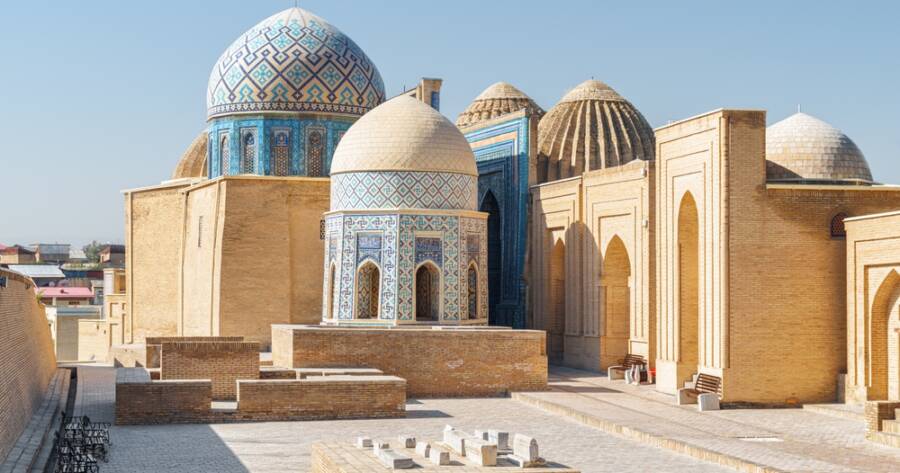The Silk Road was more than a network of trade routes—it was a path that connected civilizations. Stretching from China to Europe, it moved goods, people, ideas, and cultures. Today, travelers are rediscovering this ancient corridor, not for trade, but for insight, exploration, and a deeper understanding of the world’s shared history.
A Path Through Civilizations
The Silk Road spanned thousands of miles and multiple empires. It wound through China’s cities, crossed Central Asian deserts, and passed into the Middle East and Europe. While silk was its most famous cargo, merchants also carried spices, ceramics, paper, and precious stones. More than just commerce, it sparked cross-cultural exchange. Languages, religions, and technologies spread across continents thanks to these routes.
For modern travelers, following the Silk Road is like stepping into a living museum. Remnants of ancient caravanserais, Buddhist cave temples, Islamic architecture, and Mongol fortresses dot the landscape. Cities like Xi’an, Samarkand, and Bukhara remain vivid centers of cultural fusion. They’re reminders of a time when the world felt smaller—not because it was, but because it was more connected.
Modern Travel on the Ancient Silk Road
Today’s Silk Road adventure is more accessible than ever, thanks to improved infrastructure across Asia. China’s Belt and Road Initiative has even revitalized some of the original trade corridors. Travelers can chart their journey across multiple countries: China, Kyrgyzstan, Uzbekistan, Iran, and Turkey are some of the highlights along the route.
In China, Xi’an offers a natural starting point. This former capital of multiple dynasties is where the Silk Road began. Westward, travelers might pass through the Taklamakan Desert, where oasis towns like Kashgar still buzz with activity. In Uzbekistan, Samarkand and Bukhara reflect centuries of Islamic art and learning. Further west, cities like Tabriz and Istanbul mark the blending of East and West.
Transportation options vary. Some choose trains across Kazakhstan and Russia. Others opt for road trips, camel treks, or hiking segments of old trails. No matter the pace, the experience is rich with cultural immersion.
History You Can Touch
What makes the Silk Road remarkable is how much of its legacy remains visible. In Dunhuang, China, the Mogao Caves hold thousands of Buddhist artworks, preserved in desert silence. In Uzbekistan, the Registan in Samarkand dazzles with blue tiles and soaring arches, echoing the region’s golden age. Across the region, you’ll find bazaars that still trade textiles, spices, and local crafts, much like their ancient counterparts.
These places allow travelers to touch history—not through glass or exhibits, but by standing where merchants once bartered and pilgrims prayed. Whether it’s a yurt in the Kyrgyz highlands or a Persian caravanserai, each stop tells a chapter of the Silk Road’s vast story.
Cultural Encounters Beyond the Map
While historic sites are a highlight, the people living along the Silk Road today are just as important. Many families have kept traditions alive for centuries. Hospitality is central to cultures in Central Asia, and travelers are often invited to share meals or learn local customs. It’s not uncommon to find yourself sipping tea in a mountain village, listening to folk music, or learning how to weave silk.
These human connections make the journey more than sightseeing. They offer insight into how global cultures continue to evolve while honoring their roots. In many ways, the Silk Road is still alive—just not in the way it once was.
A Journey That Changes You
Traveling the Silk Road is not about checking landmarks off a list. It’s about understanding movement—of goods, people, and ideas—and how that movement shaped the world. As travelers move through ancient ruins, modern cities, and open landscapes, they begin to see the larger narrative of global exchange.
It’s also a reminder of how interconnected we’ve always been. Despite modern borders and differences, the Silk Road’s history proves that cultures have always borrowed, blended, and built upon each other. Rediscovering it today can offer perspective on how far we’ve come and where we might go.
Reconnecting With the Past
The Silk Road invites travelers to slow down and look closer. It’s a path of reflection and discovery—geographically rich and culturally layered. While the goods may no longer be traded as they once were, the ideas, stories, and memories continue to travel.
For anyone seeking a meaningful journey filled with learning and connection, the Silk Road offers a route worth following.

